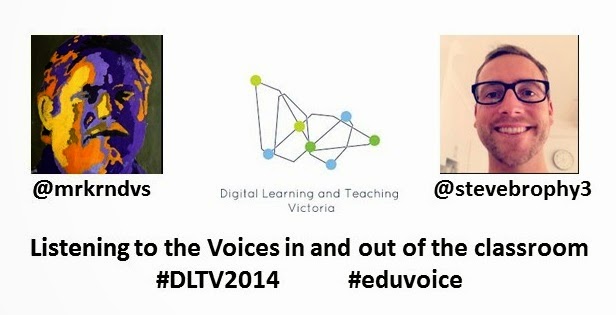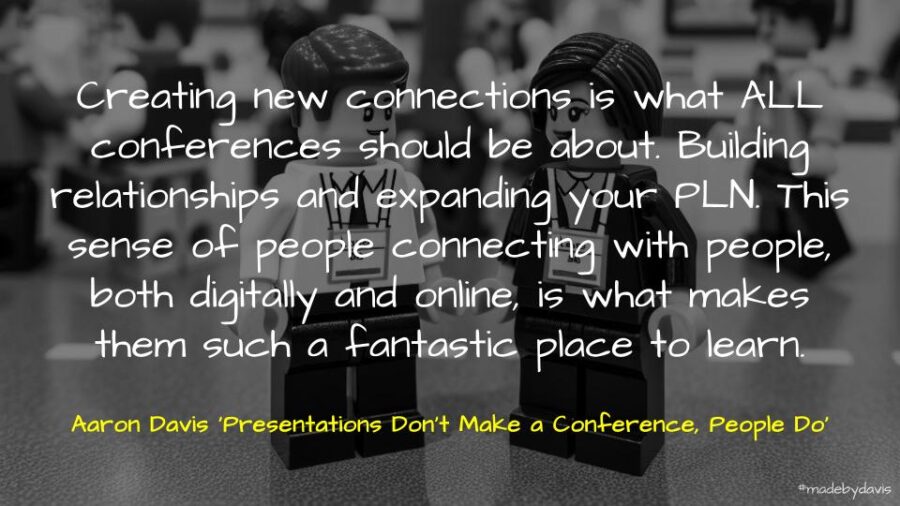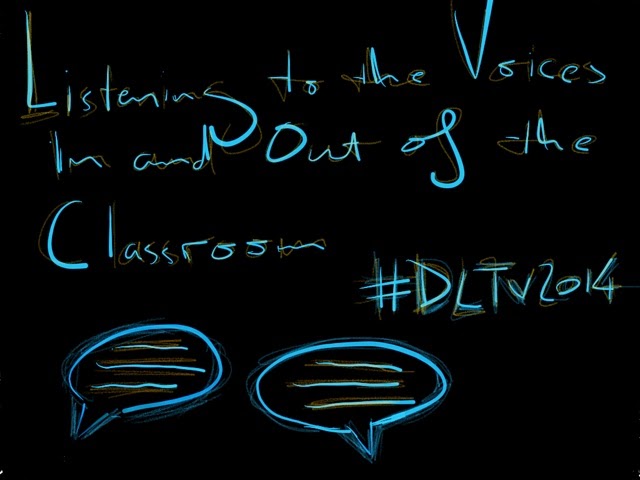 |
- Students communicating and collaborating with each other
- Students and teachers in dialogue about learning
- Teachers connecting as a part of lifelong learners

 |

As I sat through one of the most horrendous presentations on Office 365, it got me wondering about the question, what makes a good presentation? I sat there thinking what would make this better? What was missing?
At first I thought that it was the absence of any conversation about pedagogy. A point that +Edna Sackson made about last years GAFE Summit in her post, ‘‘I Want to Talk About Learning…’ There was reference to pricing schemes and packages, what this includes and what that does. However, I had signed up with the hope that I could take back to school a few more tips relating to how to get the most out of Windows 8 – whether it be new applications or different functionalities – I was wrong.
The one thing that held me together throughout was the conversations I was having on Twitter with +Rich Lambert. He too was lost in the presentation. Although our banter was critical of Microsoft and their lack of innovation, much of it was in jest. We were adding a layer of humour that was seemingly absent. However, what occurred to me later was that it wasn’t learning or even humour that makes a great conference, it is people.
+Steve Brophy and I presented on the notion of listening to voices in and out of the classroom. Even though we created a range of spaces to continue the conversation, whether it be in our Google+ Community, through our Diigo Group or even simply using the hashtag #eduvoice. The place where most people wanted to connect and share was not necessarily online, which may come later I guess, but rather in person. People wanted to talk, they wanted to tell their story, share their ongoing journey.
Creating new connections is what ALL conferences should be about. Building relationships and expanding your PLN. This sense of people connecting with people, both digitally and online, is what makes them such a fantastic place to learn. To riff on +David Weinberger‘s point, “The smartest person in the conference is the conference.”
One of the things that I loved the most about #DLTV2014 was actually neither a session nor something that can necessarily be deduced to ‘one single thing’. Instead it was an initiative to generate conversations about change and reform called Institute of the Modern Learner. The idea was that anyone could add to the conversation. What made this so interesting wasn’t necessarily the idea itself, which was important, but the way in which it was carried and communicated. Some were handed random cards as they moved throughout the conference, an online space was created which was linked to a Twitter handle, while short injections were made during many different presentations. At its heart though, this movement to me was connected with the attempt to create a space for learning as embodied by ‘Gaming in Education’ stream. There were no presentations as such, instead there was a space with different hands-on posts set up, such as old console games, programmable devices and Lego poetry. Here you were at the centre of your own learning with people like +Dan Donahoo, +Kynan Robinson and +Jess McCulloch there to support and continue the conversation.
+DLT Victoria 2014 then to me has been a success. For it is easy to say that the spaces were sometimes confusing or there were too many sessions and streams, however if you walked away from the conference without creating one new connection or strengthening some ties that already existed, I would argue that you weren’t really there. Coming back then to Weinberger, “Even if the smartest person in the room is the room itself, the room does not magically make all who enter it smarter.”
Were you at DLTV2014? If not, did you follow online? What is your story? Tell me, because that is what learning is all about.


 |
| creative commons licensed (BY-NC) flickr photo by mrkrndvs: http://flickr.com/photos/aaron_davis/14425906657 |
It is only a few weeks until the inaugural DLTV conference. +Steve Brophy and I will be presenting a session on listening to other voices in the classroom. Here is the blurb for those interested: